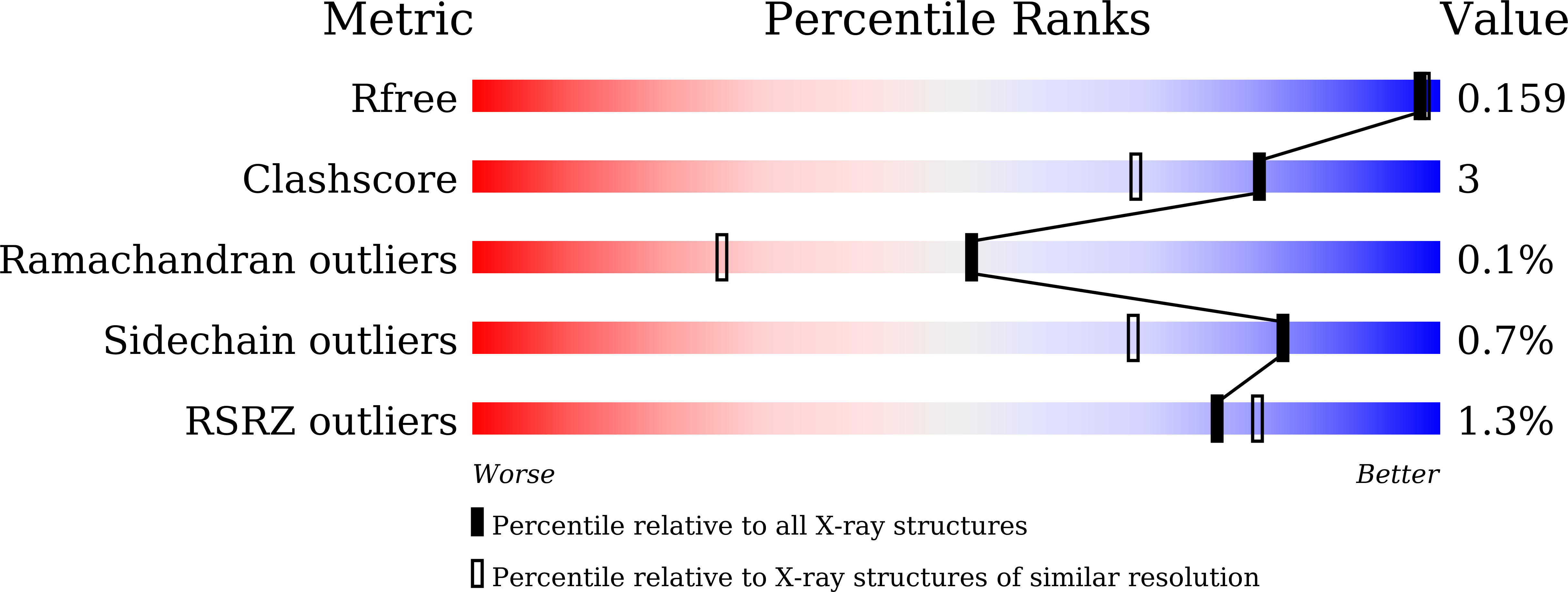Structural and biochemical interrogation on transketolase from Pichia stipitis for new functionality
Hsu, L.J., Hsu, N.S., Wang, Y.L., Wu, C.J., Li, T.L.(2016) Protein Eng Des Sel
- PubMed: 27578891
- DOI: https://doi.org/10.1093/protein/gzw036
- Primary Citation of Related Structures:
5HGX, 5HJE, 5HYV, 5I4I, 5I51, 5I5E, 5I5G - PubMed Abstract:
In the development of new functionalities of transketolase for the industrial strain Pichia stipitis (TKps) the structural information of TKps would allow us to gain insight into the enzyme's reaction mechanisms, substrates selectivity and reaction directionality to help reach the goal. We here report seven TKps crystal structures of wild type (WT) and mutants in complex with various physiological ligands. These complexes were refined to resolutions at 1.6-1.03 ?. Both biochemical and mutagenic analyses concluded that residues His27, His66, His100, His261, His478, Asp473, Arg356 and Arg525 play important roles in coenzyme binding and substrates recognition. In general, His66 and His261 hold thiamine diphosphate in place; Arg356 and Arg525 serve as gatekeepers interacting with the terminal phosphate group of sugar-phosphates. His27, His66, His100, His478 and Asp473 are critical for sugars recognition/binding, in which His27 is relatively more important in interaction with sedoheptulose-7-phosphate (S7P) than xylulose-5-phosphate (X5P) in terms of molecular recognition/binding affinity. Kinetically, the reactions with X5P (forward) which were catalyzed by WT or H27A are indistinguishable, while in the reactions with S7P (backward) H27A exhibits weaker activity relative to WT. As a result, given TKps(H27A) as the biocatalyst the overall reactivity reverses from the backward reaction preference to forward, thus facilitating net xylose assimilation.
Organizational Affiliation:
Genomics Research Center, Academia Sinica, Taipei 115, Taiwan.




















